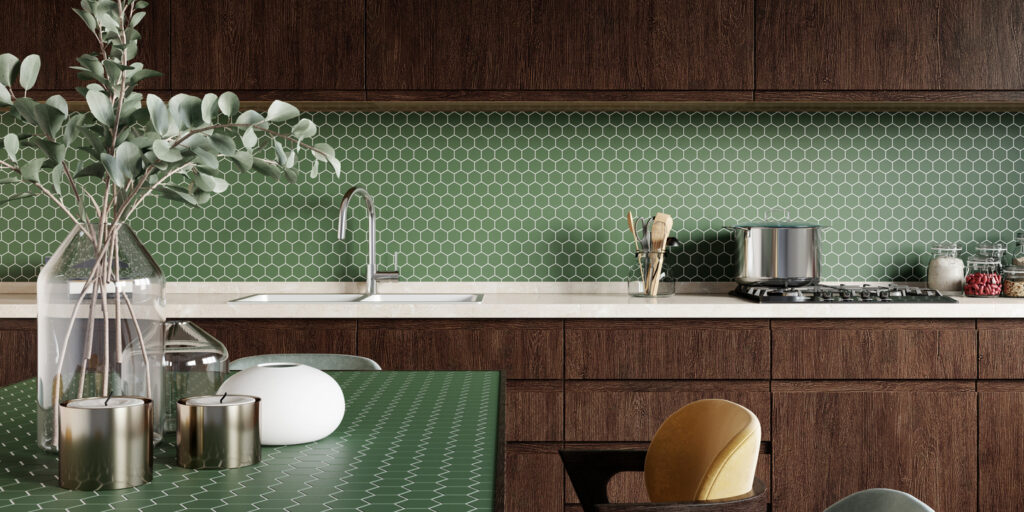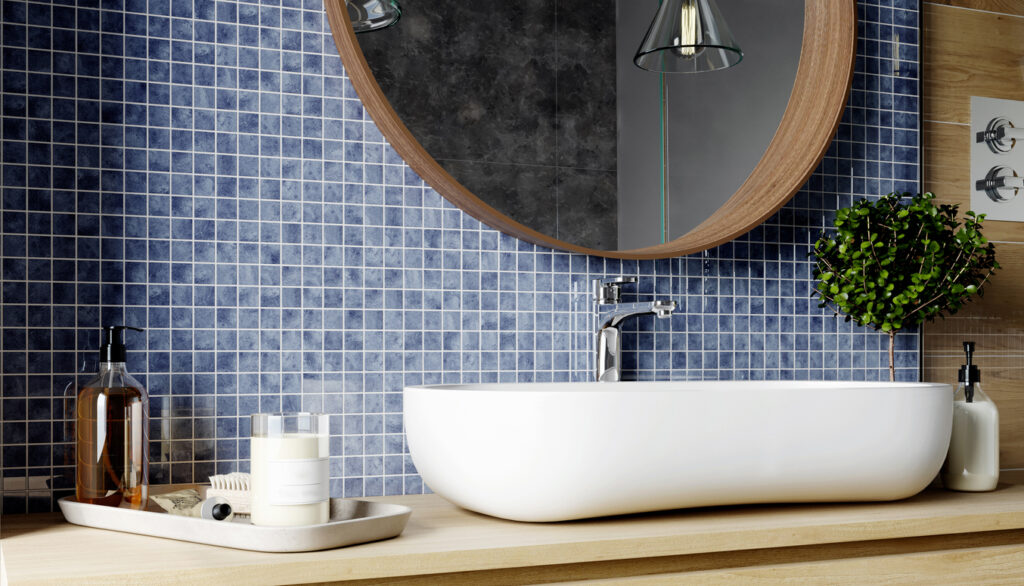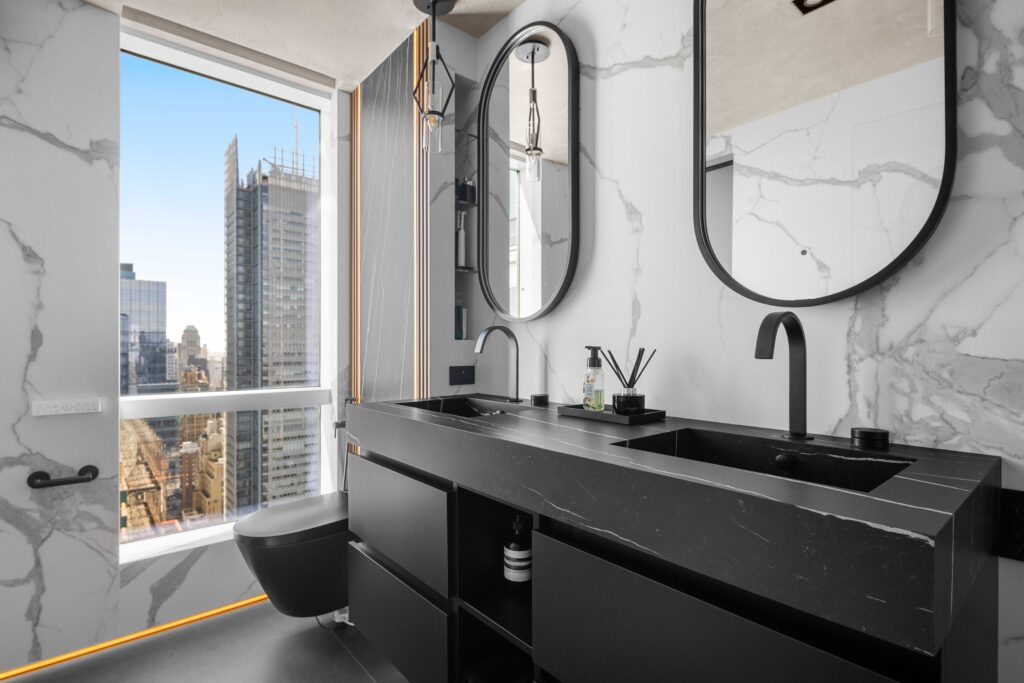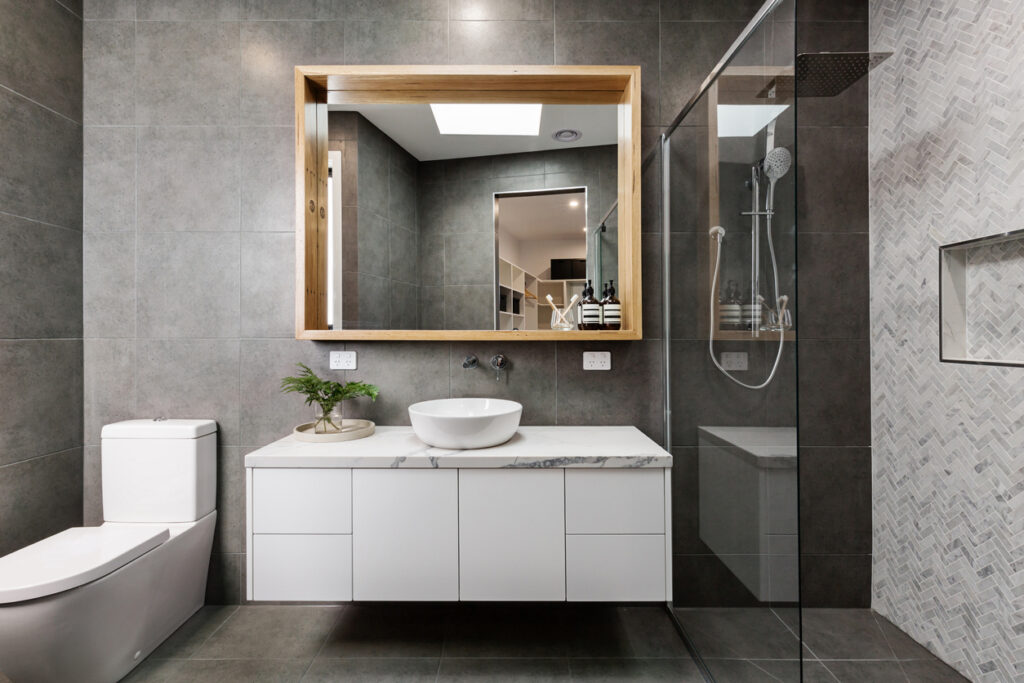When selecting tiles for a home renovation, one of the most common dilemmas homeowners face is choosing between porcelain and ceramic tiles. While both materials are made from clay and fired in a kiln, their differences impact durability, water resistance, and overall application. Understanding these key differences will help you make the right choice for your space.
Composition & Manufacturing
Both porcelain and ceramic tiles are made from clay, but the type of clay and the manufacturing process differ significantly. When trying to make the right choice for your bathroom tile design, the following is what you should know:
- Porcelain Tiles: Made from finer, denser clay and fired at higher temperatures, porcelain tiles are less porous and more durable than ceramic tiles. They are also often infused with feldspar to enhance their hardness.
- Ceramic Tiles: Made from coarser clay and fired at lower temperatures, ceramic tiles are more porous and less dense, making them easier to cut and install.

Durability & Strength
- Porcelain Tiles: Extremely strong and highly resistant to wear and tear. This makes them ideal for high-traffic areas such as hallways, kitchens, and commercial spaces.
- Ceramic Tiles: Less dense than porcelain, ceramic tiles are best suited for low-traffic areas, such as walls, backsplashes, and bathrooms.
Water Resistance
- Porcelain Tiles: With an absorption rate of less than 0.5%, porcelain is nearly waterproof, making it an excellent choice for bathrooms, kitchens, and outdoor applications.
- Ceramic Tiles: More porous than porcelain, ceramic tiles can absorb more water, which limits their use in wet areas unless they are properly sealed.

Appearance & Design Options
Both ceramic and porcelain tiles come in a variety of colors, textures, and patterns. However, porcelain tiles tend to have more sophisticated manufacturing techniques, allowing them to mimic materials like natural stone and wood more realistically.

Installation & Maintenance
- Porcelain Tiles: Due to their density and hardness, porcelain tiles are more challenging to cut and require specialized tools. However, they require minimal maintenance due to their stain and moisture resistance.
- Ceramic Tiles: Easier to cut and install, ceramic tiles are a great choice for DIY projects. However, they may require more frequent sealing to maintain their appearance and durability.
Cost Consideration
- Porcelain Tiles: More expensive due to their durability and advanced manufacturing process.
- Ceramic Tiles: Generally more budget-friendly, making them an attractive option for homeowners looking for an affordable and stylish finish.
Best Applications
| Feature | Porcelain Tiles | Ceramic Tiles |
|---|---|---|
| Durability | High | Moderate |
| Water Resistance | High | Moderate |
| Maintenance | Low | Moderate |
| Installation | Challenging | Easier |
| Cost | Higher | Lower |
| Best For | Floors, bathrooms, exteriors | Walls, low-traffic floors, backsplashes |

Final Thoughts
Choosing between porcelain and ceramic tiles depends on your project’s needs. If you’re looking for durability, water resistance, and longevity, porcelain tiles are the better option. If you prioritize budget and ease of installation, ceramic tiles offer the right fit.
Still unsure? Consulting with a Klein kitchen and bath can help you determine which material is best for your specific project and lifestyle needs!



